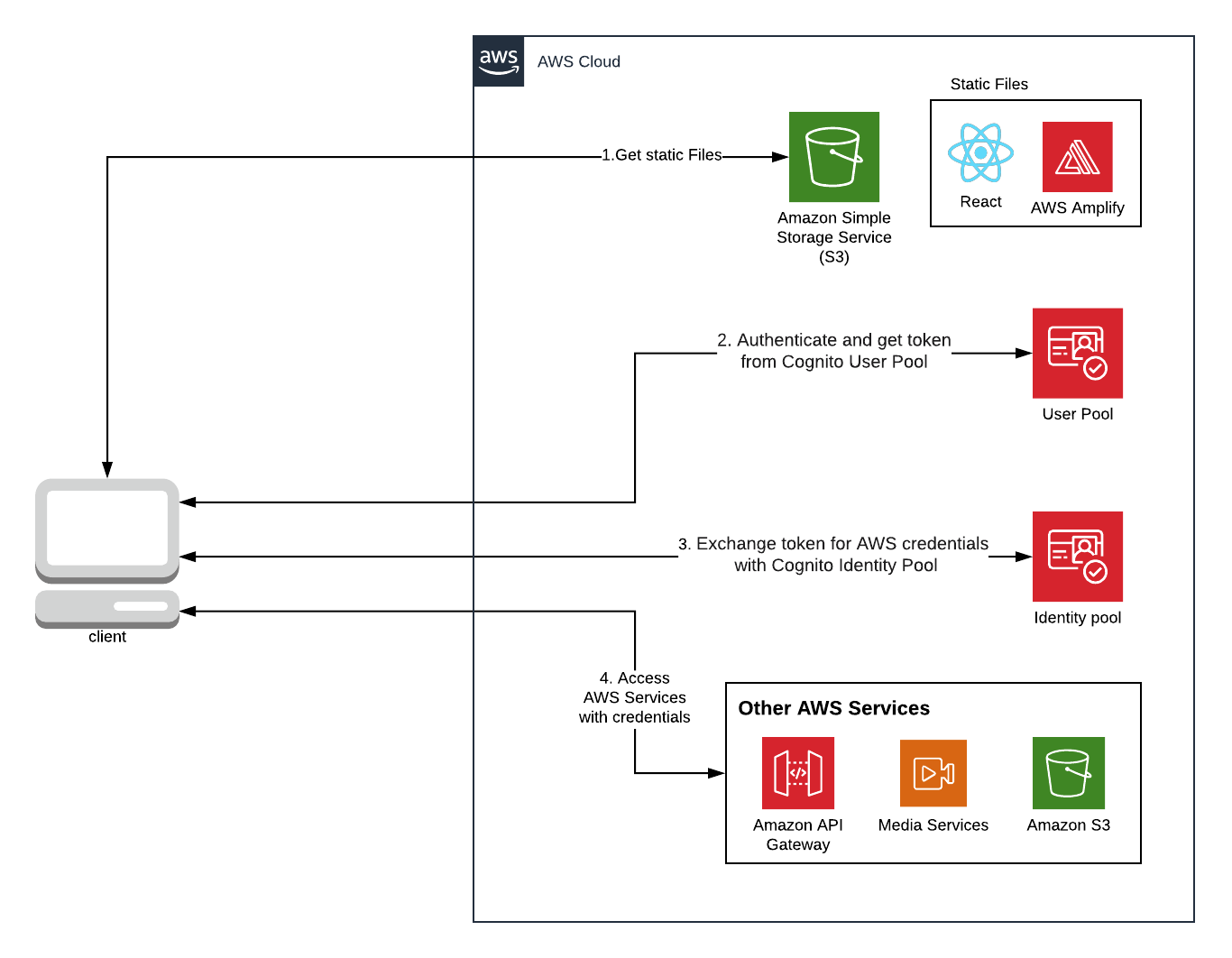aws-cognito-boilerplate
AWS Cognito boilerplate using amplify-js
Infrastructure
Configuration
.env file is by default present in .gitignore file. You must have to rename .sample.env to .env and fill variables to make sure that the application retrieve them
Install dependencies
$ yarn or npm installTests
Run Cypress whitout GUI using
$ yarn run cy:run or npm run cy:runRun Cypress with GUI using
$ yarn run cy:open or npm run cy:openAmplify authentication configuration
With Amplify CLI
You can use Amplify CLI to configure the project, our configuration class will automatically apply the configuration that have been generate by the CLI.
Manually
We provide to Amplify a configuration file that can be edited inside shared/amplify.config.ts
export const amplifyConfig: AmplifyConfig = {
Auth: {
region: process.env.REACT_APP_REGION,
userPoolId: process.env.REACT_APP_USER_POOL_ID,
userPoolWebClientId: process.env.REACT_APP_USER_POOL_WEBCLIENT_ID,
},
language: "us",
};amplifyConfig object is an AmplifyConfig interface
export interface AmplifyConfig {
Auth: Auth;
language?: string;
}By default we provide inside .sample.env the required object by Amplify for the authentication configuration but if you need to add custom settings feel free to add them inside your environment file.
If you need to add a new service, for instance storage service (Amazon S3) you can create a new entry to the amplifyConfig object and create a new interface. i.e:
export const amplifyConfig: AmplifyConfig = {
Auth: {
region: process.env.REACT_APP_REGION,
userPoolId: process.env.REACT_APP_USER_POOL_ID,
userPoolWebClientId: process.env.REACT_APP_USER_POOL_WEBCLIENT_ID,
},
Storage: {
AWSS3: {
bucket: '', //REQUIRED - Amazon S3 bucket
region: 'XX-XXXX-X', //OPTIONAL - Amazon service region
}
}
language: 'us'
};For more information refers to Amplify documentation to see required fields by Amplify for the storage service.
Authenticator component
Authenticator component (provided by Amplify) pass the authState props to child components. We use this authState to render or not the rest of your application
index.tsx
const Guard = ({ authState }: { authState?: AuthState }) => {
if (isAuthenticated(authState || "")) {
return <App />; // Replace App by your own App
}
return null;
};
const CognitoBoilerplate = () => {
return (
<React.StrictMode>
<GlobalStyle />
<Authenticator {...authenticatorConfig}>
<Guard />
</Authenticator>
</React.StrictMode>
);
};
// Wait for Amplify configuration apply
(async () => {
Amplify.configure(amplifyConfig);
ReactDOM.render(<CognitoBoilerplate />, document.getElementById("root"));
})();If the user is logged in, we render the rest of the App and so on.
Important:
When the state is signedIn, it will return a CognitoUser object, this CognitoUser is automatically passed as an authData prop to the child component
Customization
If you want to customize the Amplify UI Theme, we have created configuration objects that map Amplify configuration properties. You can customize the following:
- UI Theme
- SignUp Configuration Amplify SignUp Configuration
- Amplify Configuration
For more information refers to Amplify theme customization to see all amplify cutomization settings
Custom components
Sometimes we need to customize more than the color of the theme, this is why we shipped inside shared/components custom components. They inherits Amplify components, allowing you to customize what you want.
Authenticator is designed as a container for a number of Auth components. Each component does a single job, e.g., SignIn, SignUp, etc. By default, all of these elements are visible depending on the authentication state.
If you want to replace some or all of the Authenticator elements, you need to set hideDefault: true in authenticatorConfig object or fill the amplifyHiddenComponents array inside amplify.config.ts, so the component doesn’t render its default view. Then you can pass in your own set of child components that listen to authState and decide what to do.
For more information visit Amplify documentation
